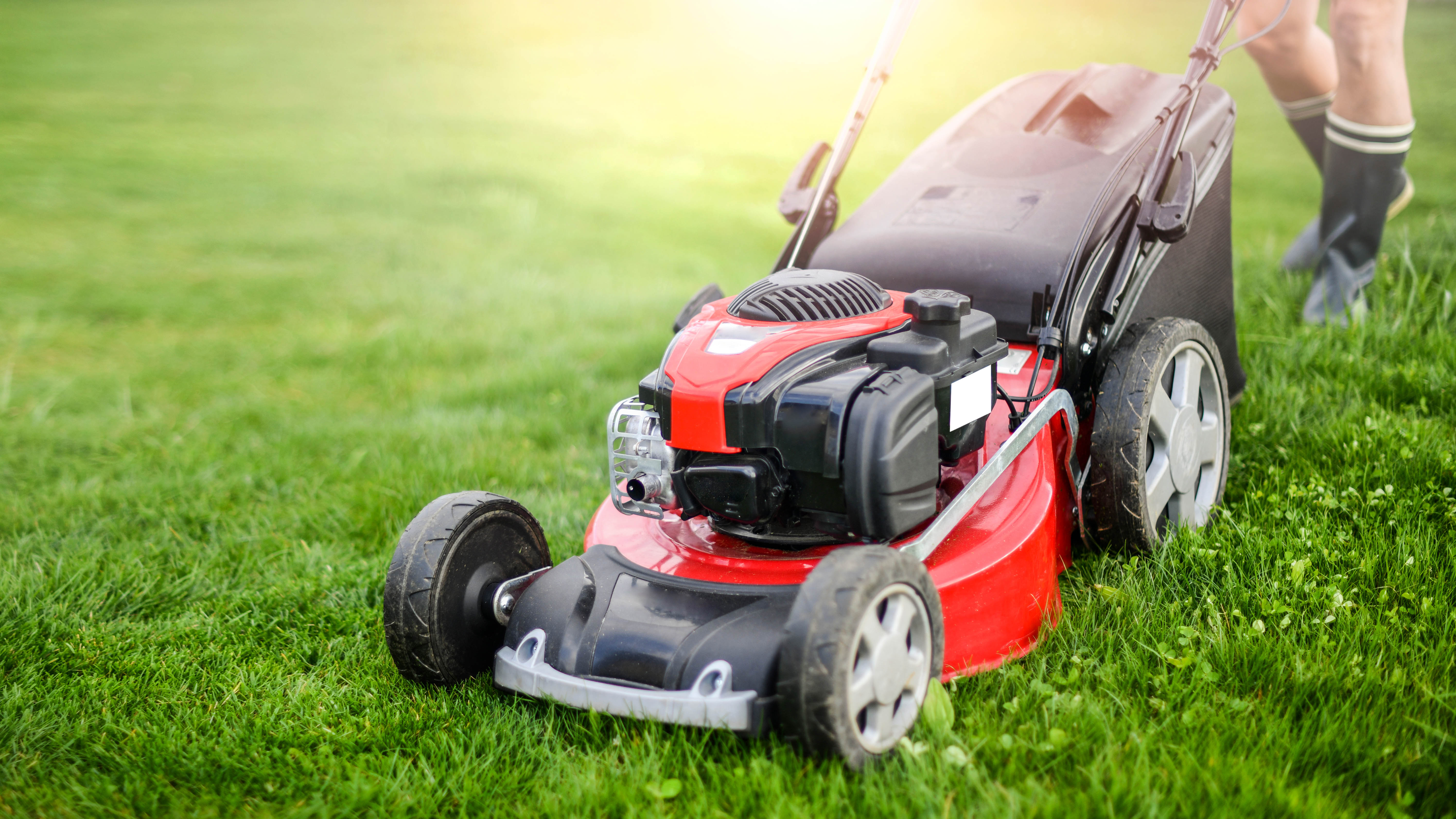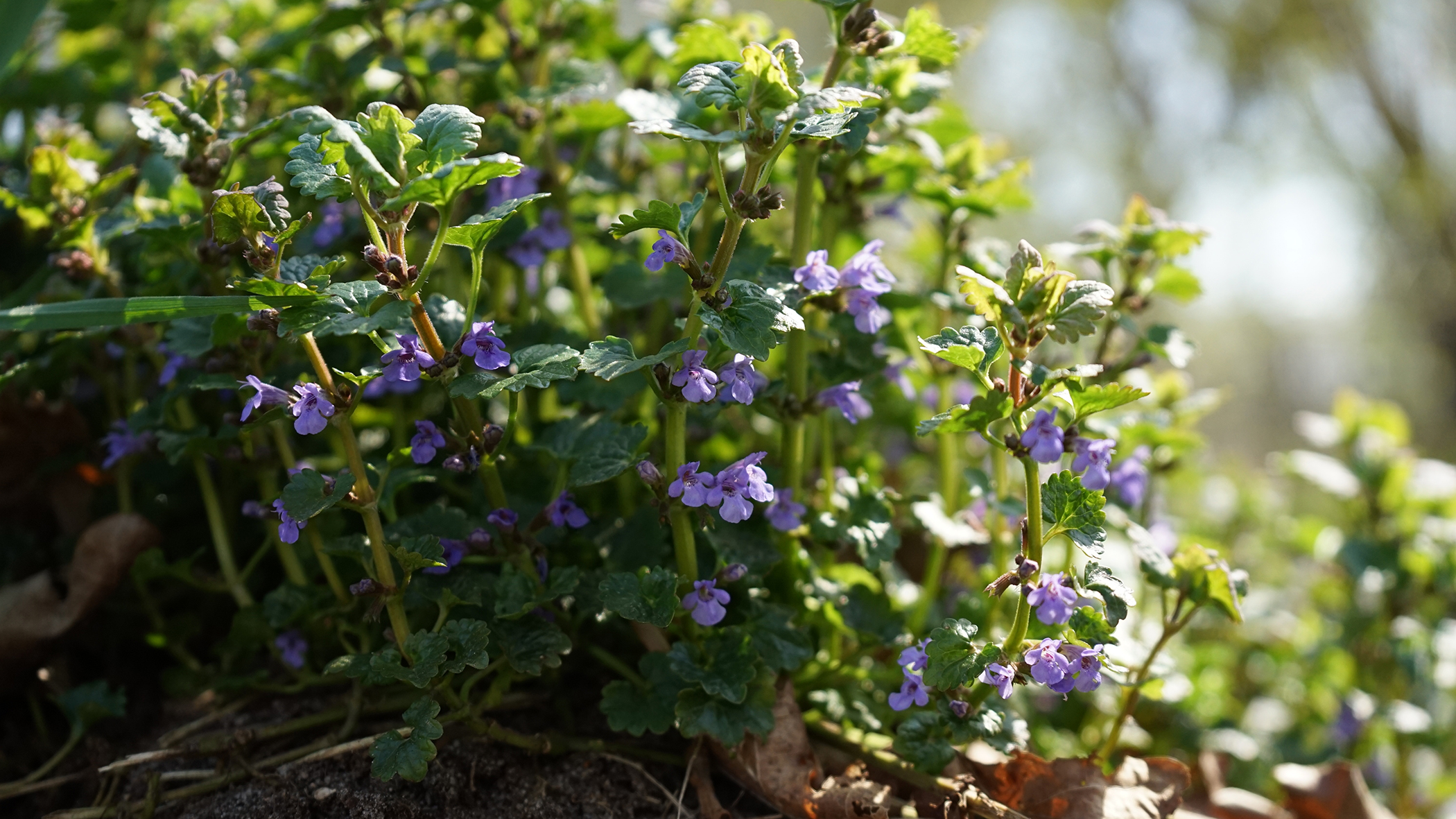How to stop ground ivy taking over your lawn

Ground ivy, also known as creeping Charlie, is every lawn owner's nightmare. It's a fast-spreading, stubborn weed that can quickly take over your lawn and garden beds if left unchecked.
With its thick mats of foliage and creeping stems, it chokes out grass and desirable plants, making it one of the most frustrating invaders for homeowners. The plant's ability to spread rapidly through underground runners, thrive in poor soil conditions, and outcompete weakened grass makes it a formidable opponent.
Unlike annual weeds that you can simply wait out, ground ivy establishes permanent root systems and returns year after year, often expanding its territory. The key to winning this battle is creating conditions where your grass can fight back.
In this guide, we’ll cover five sure-fire ways to eliminate ground ivy — and take back your yard for good.
What's more, it's one of the plants that you should never grow on your house.
1. Strengthen your lawn

Ground ivy thrives in compacted, poorly draining soil where grass can’t take hold. To test your drainage, dig a small hole and fill it with water, if it sits for hours, you’ve got a problem.
Aerate your lawn in spring or fall, and mix in compost to loosen heavy clay. In severely compacted spots, core aeration plus topdressing with sand and compost can make a big difference.
A well-fed lawn is your best defense against any weed invasion. Apply a balanced fertilizer (such as 10-10-10) in early spring when grass begins active growth, and again in fall to help roots store energy for winter.
Avoid over-fertilizing with nitrogen in summer, as this can actually weaken grass during stress periods. Slow-release fertilizers provide.
2. Mow smarter

Set your mower to cut grass at 3-4 inches tall, significantly higher than you might think looks "neat." Taller grass shades the soil, preventing ground ivy seeds from germinating, while deeper root systems make your lawn more drought-tolerant and competitive.
Never remove more than one-third of the grass blade length in a single cutting, and maintain sharp mower blades to prevent tearing that weakens grass plants. Mow frequently enough that you're never removing more than an inch of growth.
Doing this keeps grass plants healthy while preventing ground ivy from flowering and setting seed. During peak growing season, this might mean mowing twice weekly.
3. Increase density through overseeding

Select grass that best fits your yard. For shady areas where ground ivy tends to grow, use shade-loving types like fine fescue or tall fescue. In sunny spots, go with grass suited to your region — cool-season for northern climates, warm-season for the south.
Early fall is the best time to plant grass seed because the soil is warm, the air is cooler, and weeds are less aggressive. You can seed in spring, but it takes more watering and weed control.
Before seeding, rake bare patches so the seed touches the soil, add starter fertilizer, and keep it watered until the grass sprouts. A thick, healthy lawn helps block out ground ivy and other weeds naturally.
4. Use herbicide at the right time

To get the best results, apply herbicide when ground ivy is actively growing and flowering — usually in late spring or early fall. That’s when the plant pulls nutrients down into its roots, which helps the herbicide work better.
Look for a lawn-safe weed killer that lists ground ivy or creeping Charlie on the label. Ingredients like triclopyr, dicamba, or 2,4-D are commonly used. Always follow the directions closely, as the right amount and timing really matter.
Spray on a calm, dry day when it’s between 60–80°F. Avoid windy days so the spray doesn’t drift onto flowers or shrubs, and never treat a lawn that’s dried out or stressed — you could end up harming the grass.
5. Long term prevention

Even after initial control, watch for new ground ivy patches and address them immediately. Small infestations are much easier to manage than established colonies. Hand-pulling can work for very small patches, but ensure you remove all stem pieces, as any remaining fragments can regrow.
Continue proper fertilization, watering, and mowing practices year-round. A thick, healthy lawn naturally resists weed invasion and recovers quickly from any control measures you need to take.
If ground ivy repeatedly returns to the same areas, examine what conditions are allowing it to outcompete your grass. This might indicate persistent drainage problems, too much shade, soil compaction, or nutrient deficiencies that need ongoing attention.
Now you've learned how to tackle ground ivy, why not take a look at some more helpful gardening guides?
Learn how to attract bees to your backyard — 7 pollinator-friendly plants to grow now and 7 tips to banish weeds from your lawn that won't harm the grass. Also, if you're looking to make your grass greener than ever this year, we've got you covered.
And if you're planning BBQs this summer, check out how to turn any grill into a non-stick surface using this one kitchen staple.
Get instant access to breaking news, the hottest reviews, great deals and helpful tips.

Kaycee is Tom's Guide's How-To Editor, known for tutorials that skip the fluff and get straight to what works. She writes across AI, homes, phones, and everything in between — because life doesn't stick to categories and neither should good advice. With years of experience in tech and content creation, she's built her reputation on turning complicated subjects into straightforward solutions. Kaycee is also an award-winning poet and co-editor at Fox and Star Books. Her debut collection is published by Bloodaxe, with a second book in the works.
You must confirm your public display name before commenting
Please logout and then login again, you will then be prompted to enter your display name.
